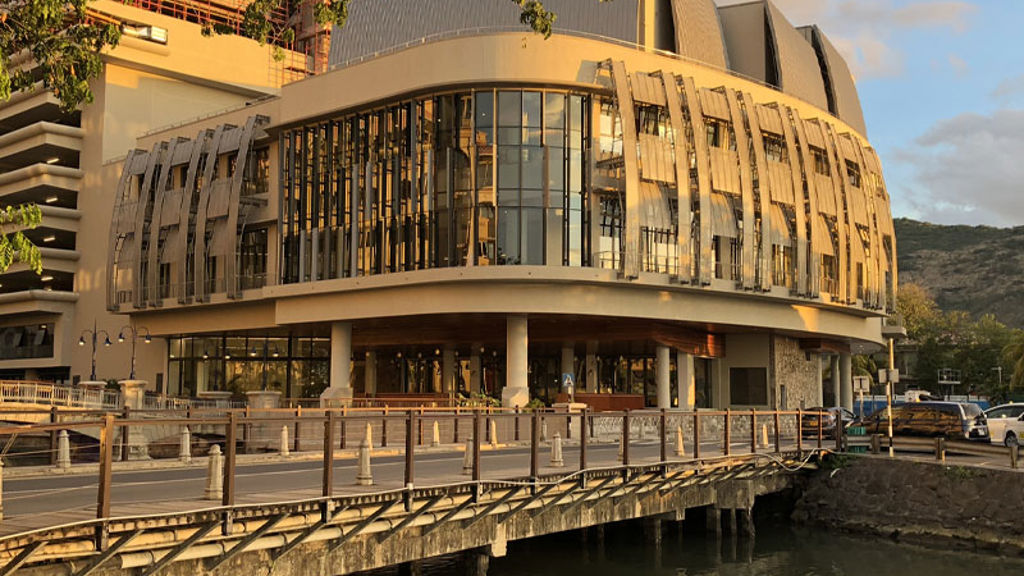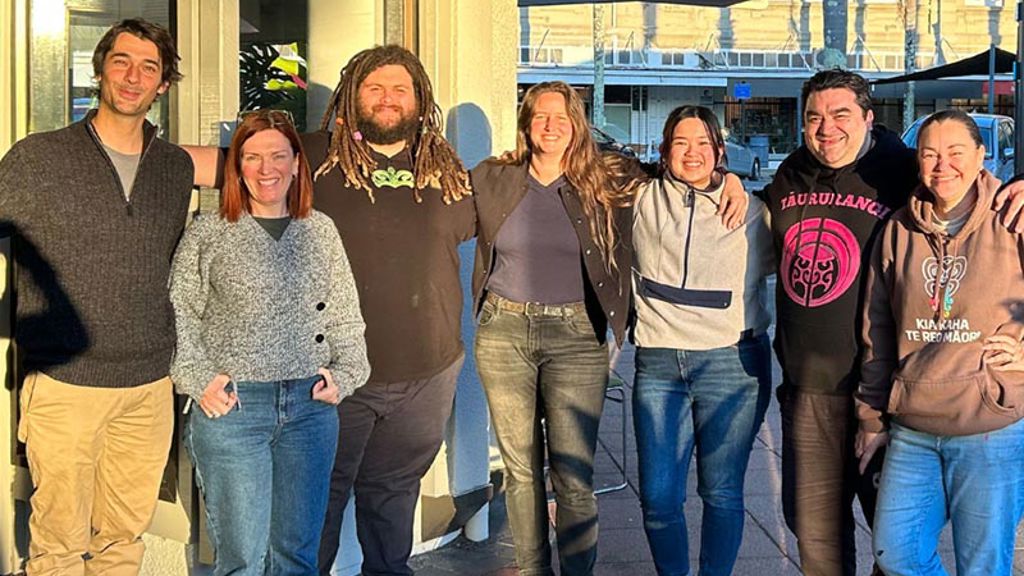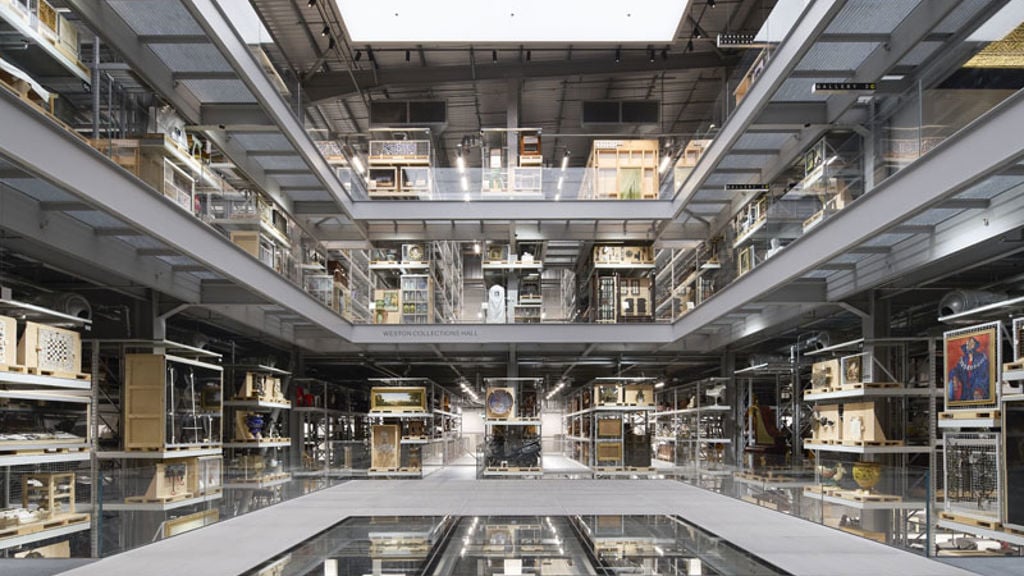Façade engineering and design
A primary structure of inclined concrete shell walls supports a reconstituted stone façade. To invoke the appearance of a cliff face, as per Kengo Kuma’s vision inspired by the coastline of northeastern Scotland, a complex algorithm was developed to translate the twisting geometry into a series of organic, irregular elements made of horizontal, straight reconstituted stone panels. Parametric modelling was used optimise the pre-cast panels, while maintaining the random appearance, making their manufacture and transportation more economical. All 2,429 elements were compiled into a schedule of cladding panel lengths and shapes.
The double curvature of the structural walls presented a specific challenge. The panels are hung off the structure and a bespoke bracket was designed to ‘prop’ each plank away from the curved wall and at the required angle. This meant that a common fixing could be used for all the variations of cladding and became an intrinsic part of the installation process we devised.
Due to the waterfront location, certain areas of glazed curtain wall are directly exposed to strong wave loads and required an enhanced design of robust glass build-up and steel support members and necessary levels of corrosion resistance for all elements. The facade team steered the architect through materials choices, their feasibility, appropriateness and buildability.









